News Archive
Filter By
- Abyssinian ground hornbill
- Addax
- Aldabra tortoise
- Allen's swamp monkey
- Alpaca
- American alligator
- American avocet
- American bison
- American flamingo
- American wigeon
- Andean bear
- Aquatic caecilian
- Arapaima
- Asian elephant
- Asian small-clawed otter
- Asian water dragon
- Australian snake-necked turtle
- Bald eagle
- Baltimore oriole
- Barred owl
- Bearded emperor tamarin
- Beaver
- Bennett's wallaby
- Binturong
- Black-and-white ruffed lemur
- Black-crowned night heron
- Black-footed ferret
- Black-tailed prairie dog
- Black-throated blue warbler
- Blue-billed curassow
- Blue crane
- Bobcat
- Brown pelican
- Bufflehead
- California sea lion
- Canvasback
- Cedar waxwing
- Channel catfish
- Cheetah
- Chicken
- Chinese alligator
- Chinese three-striped box turtle
- Clouded leopard
- Collared brown lemur
- Common raven
- Common yellowthroat
- Corals and sea anemones (anthozoa)
- Cow
- Crocodile monitor
- Cuban crocodile
- Dama gazelle
- Degu
- Dunlin
- Eastern corn snake
- Eastern indigo snake
- Eastern newt
- Eastern red-backed salamander
- Eastern screech-owl
- Eld's deer
- Electric eel
- Emperor newt
- Fennec fox
- Fishing cat
- Gaboon viper
- Geoffroy's marmoset
- Gharial
- Giant leaf-tailed gecko
- Giant panda
- Goat
- Golden-headed lion tamarin
- Golden lion tamarin
- Gray seal
- Gray wolf
- Green tree python
- Grevy's zebra
- Guam kingfisher (sihek)
- Guam rail (ko’ko’)
- Guinea pig
- Harbor seal
- Hartmann's mountain zebra
- Hawk-headed parrot
- Hellbender
- Home's hinge-back tortoise
- Hooded crane
- Iranian fat-tailed gecko
- Japanese giant salamander
- King vulture
- Komodo dragon
- Kori bustard
- Kunekune pig
- Land hermit crab
- Larger Malay mouse-deer
- Lemur leaf frog
- Lesser hedgehog tenrec
- Lesser kudu
- Lion
- Loggerhead shrike
- Long-tailed chinchilla
- Long-tailed salamander
- Maned wolf
- Meerkat
- Miniature donkey
- Naked mole-rat
- North American porcupine
- North American river otter
- Northern Luzon giant cloud rat
- Northern pine snake
- Northern pintail
- Northern red salamander
- Northern snakehead fish
- Northern tree shrew
- North Island brown kiwi
- Norway rat
- Orangutan
- Orchard oriole
- Ossabaw Island hog
- Ostrich
- Ovenbird
- Pallas's cat
- Panamanian golden frog
- Patagonian mara
- Persian onager
- Philippine crocodile
- Prehensile-tailed porcupine
- Prevost's squirrel
- Przewalski's horse
- Pygmy slow loris
- Red-crowned crane
- Red-fronted lemur
- Red-rumped agouti
- Red-winged blackbird
- Red knot
- Red panda
- Red River hog
- Red ruffed lemur
- Red wolf
- Ring-tailed lemur
- Ruddy duck
- Schmidt's red-tailed monkey
- Scimitar-horned oryx
- Screaming hairy armadillo
- Semipalmated plover
- Semipalmated sandpiper
- Siamang
- Sitatunga
- Sloth bear
- Southern lesser galago
- Southern swamp sparrow
- Southern tamandua
- Spider tortoise
- Striped skunk
- Tanagers
- Tentacled snake
- Tiger
- Titi monkey
- Turkey
- Twig catfish
- Two-toed sloth
- Vietnamese mossy frog
- Virginia opossum
- Von der Decken's hornbill
- Western lowland gorilla
- White-cheeked gibbon
- White-faced saki
- White-naped crane
- White-nosed coati
- Whooping crane
Displaying 1151 - 1175 of 2363 articles.
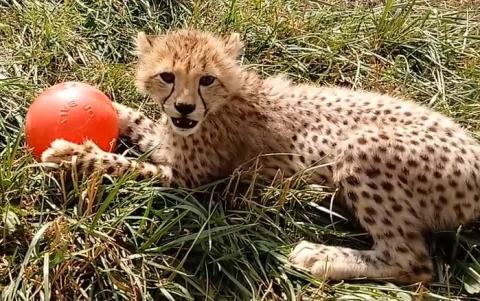
Enrichment at the Smithsonian Conservation Biology Institute
Get a behind-the-scenes glimpse of how keepers at the Smithsonian Conservation Biology Institute enrich the lives of animals by presenting them with toys, training and novel food items.
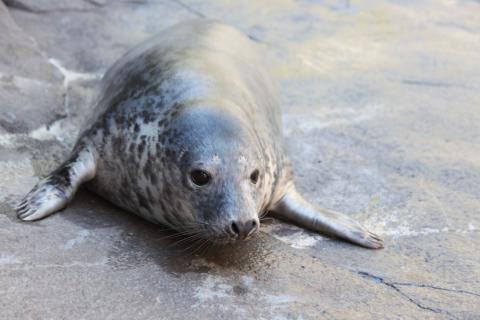
A PUPdate on Sea Lion Catalina and Gray Seal Birdie
The youngest members of American Trail’s pinniped family have made quite the splash this summer. In June, sea lion Catalina celebrated her first birthday. Meanwhile, 7-month-old gray seal Birdie is mastering some important training behaviors.
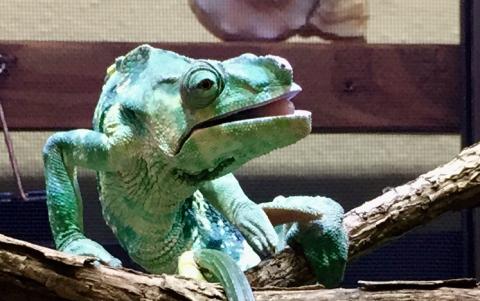
New at the Zoo: Meet a Meller’s Chameleon
What animal has the ability to see in two directions at once, changes colors depending on its mood and can catch its prey with a flick of the tongue? Reptile Discovery Center keepers welcomed a brand new species, the Meller’s chameleon, into their care in June. What’s makes this species so unique...
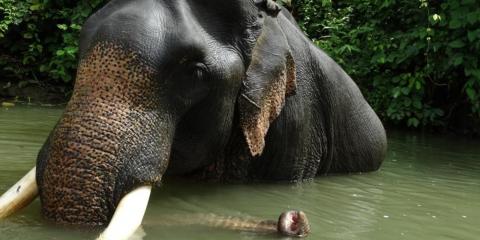
Helping Wild Elephants Where They Roam, Pt. 2
Asian elephants get much less attention than African elephants, but there is less than a tenth as many left in the world. About 500,000 African elephants remain in the wild compared to 30,000 to 50,000 Asian elephants. Out of the two, Asian elephants are more endangered and face multiple threats...
First-ever Screaming Hairy Armadillo Pups Born at Smithsonian’s National Zoo
The Smithsonian’s National Zoo welcomed two screaming hairy armadillo pups Aug. 11. The pups are the first ever born at the Zoo.
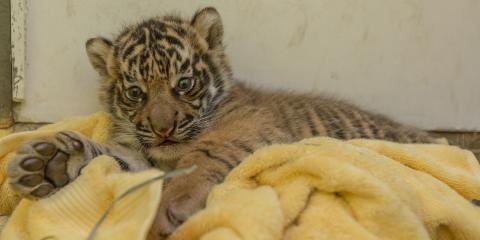
Sumatran Tiger Cub Update: Supplemental Feeding
Since Aug. 2, Great Cats keepers at the Smithsonian's National Zoo have been supplemental feeding the 6-week-old male Sumatran tiger cub.
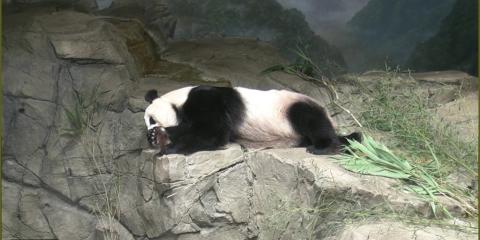
Mei Xiang is Showing More Behavioral Changes
Mei Xiang has started exhibiting more behaviors consistent with the secondary hormone phase of a pregnancy or a pseudopregnancy. That means that she has been spending the majority of her time sleeping. Simultaneously, she is starting to build a nest in her den and to eat less. Keepers have also seen...
Bei Bei Celebrates His Second Birthday at the Smithsonian's National Zoo
Giant panda Bei Bei celebrated his second birthday Aug. 22, with a panda friendly cake made by the Smithsonian's National Zoo's department of nutrition.
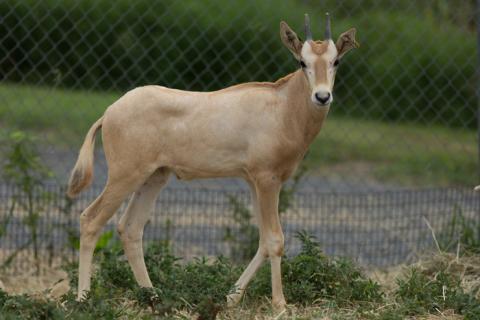
Vote to Name Our Two Scimitar-horned Oryx Calves at the Smithsonian Conservation Biology Instiute
We’re celebrating the one-year anniversary of the reintroduction of scimitar-horned oryx to the wild! As part of the celebration, we’re asking for help naming two of our scimitar-horned oryx calves at the Smithsonian Conservation Biology Institute in Front Royal, Virginia. The calves were born in...
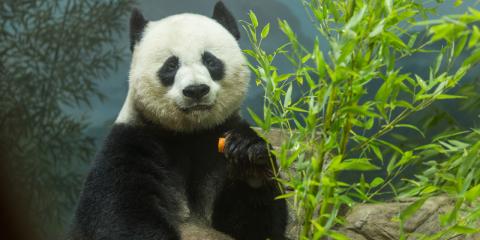
How Panda Pregnancies Can Be a Months-Long Waiting Game
Beginning Aug. 18, the David M. Rubenstein Family Giant Panda Habitat will be partially closed to keep a quiet area around panda Mei Xiang’s den. Although we are not able to confirm if she is pregnant, Mei Xiang is exhibiting expected, normal behaviors following a secondary hormone rise that are in...
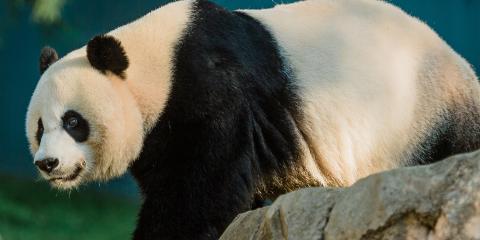
Partial Panda House Closure
The Giant Panda Habitat will be partially closed to keep a quiet area around female giant panda Mei Xiang’s den. Although keepers are not able to confirm if she is pregnant, Mei Xiang is exhibiting expected, normal behaviors after the secondary hormone rise that are in line with both a pregnancy and...
Endangered Przewalski’s Horse Dies at Smithsonian Conservation Biology Institute
Maja, a 13-year-old Przewalski’s horse, was humanely euthanized at the Smithsonian Conservation Biology Institute Aug. 13, for renal failure.

In Search of a Three-ounce Bundle of Panda
Veterinarians are giving Mei Xiang weekly ultrasounds to track changes in her uterus. Though it's too early to see a possible cub on an ultrasound, SCBI scientists detected a rise in hormones, indicating Mei Xiang will either give birth or experience the end of a pseudopregnancy in 30 to 50 days.
Elderly Red-Fronted Lemur Dies at the Smithsonian’s National Zoo
Primate keepers at the Smithsonian’s National Zoo are mourning the loss of Red Oak, a red-fronted lemur who was humanely euthanized Aug. 9.
Endangered Kiwi Chick Hatches at Smithsonian Conservation Biology Institute
An endangered brown kiwi chick kicked her way out of her egg at the Smithsonian Conservation Biology Institute (SCBI) in Front Royal, Virginia, between Saturday, July 29, and Sunday, July 30.
Smithsonian Scientists Develop Free Tool To Better Understand How Animals Use Their Home Ranges
All across the world, scientists are tracking the movements of animals, collecting considerable data to better understand how animals migrate, what paths they take and what threats they may face along the way. A new statistical model from the Smithsonian Conservation Biology Institute (SCBI) and...
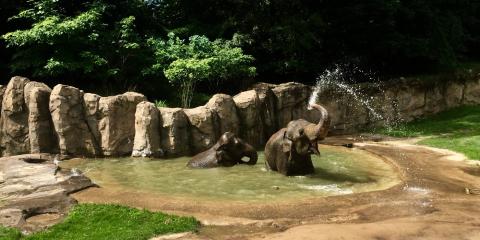
A Day in the Life of an Elephant Keeper
For Asian elephant keepers, working among the giants of the animal kingdom entails training, enriching and caring for the Zoo's multi-generational herd, as well as contributing to research and educating visitors about the conservation of this endangered species.

Reading the Hormones
Behavior can tell the giant panda team quite a bit about the pandas, but the behaviors they exhibit are only half the story. When it comes to predicting when Mei Xiang will give birth, or when she is in the final stages of a pseudopregnancy, scientists rely on a few different factors. They monitor...
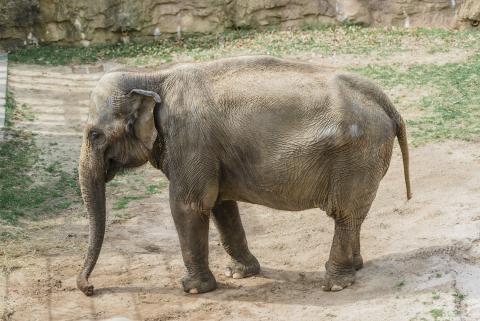
Spotlight on Training: Asian elephant Kamala
Ever since 42-year-old Asian elephant Kamala arrived at the Smithsonian’s National Zoo in May 2014, keeper Amanda Bobyack has helped her settle into her habitat. Part of that adjustment included learning husbandry and medical training behaviors that help Bobyack, her fellow keepers and the vet team...
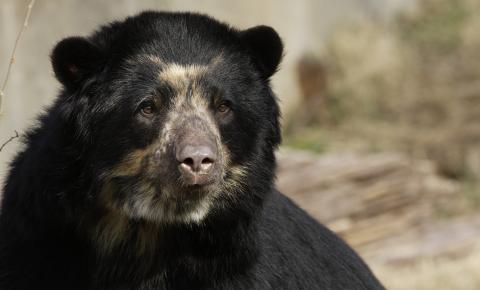
Council Membership Program: Supporting the National Zoo
You can increase your impact on the Smithsonian’s National Zoo and Conservation Biology Institute’s mission by becoming a Council member. Membership at the Council level enables our science research to reach further and helps our Zoo’s exhibits to shine even brighter.
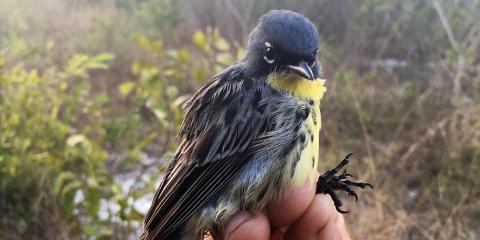
Kirtland's Warbler Expedition Blog
The Kirtland's warbler is an endangered migratory songbird that breeds almost exclusively in Michigan and winters primarily in the Bahamas. The species nests on the ground and will only breed in young Jack Pine forests. Decades of fire suppression prevented the formation of new breeding habitat for...
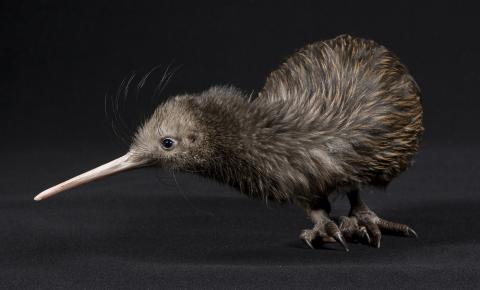
Watch: Kiwi Hatching
See the beginning of a kiwi egg hatching in this behind-the-scenes Facebook Live at the Smithsonian Conservation Biology Institute!
Smithsonian’s National Zoo Sumatran Tiger Cub Update
As the world prepares to celebrate Global Tiger Day this Saturday, July 29, Great Cats keepers have some big news to share about the 2-week-old Sumatran tiger cub in their care: it appears to be a boy!
Elderly Przewalski’s Horse Dies at the Smithsonian’s National Zoo
Keepers at the Smithsonian’s National Zoo are mourning the loss of Minnesota, a Przewalski’s horse who was humanely euthanized yesterday morning.
